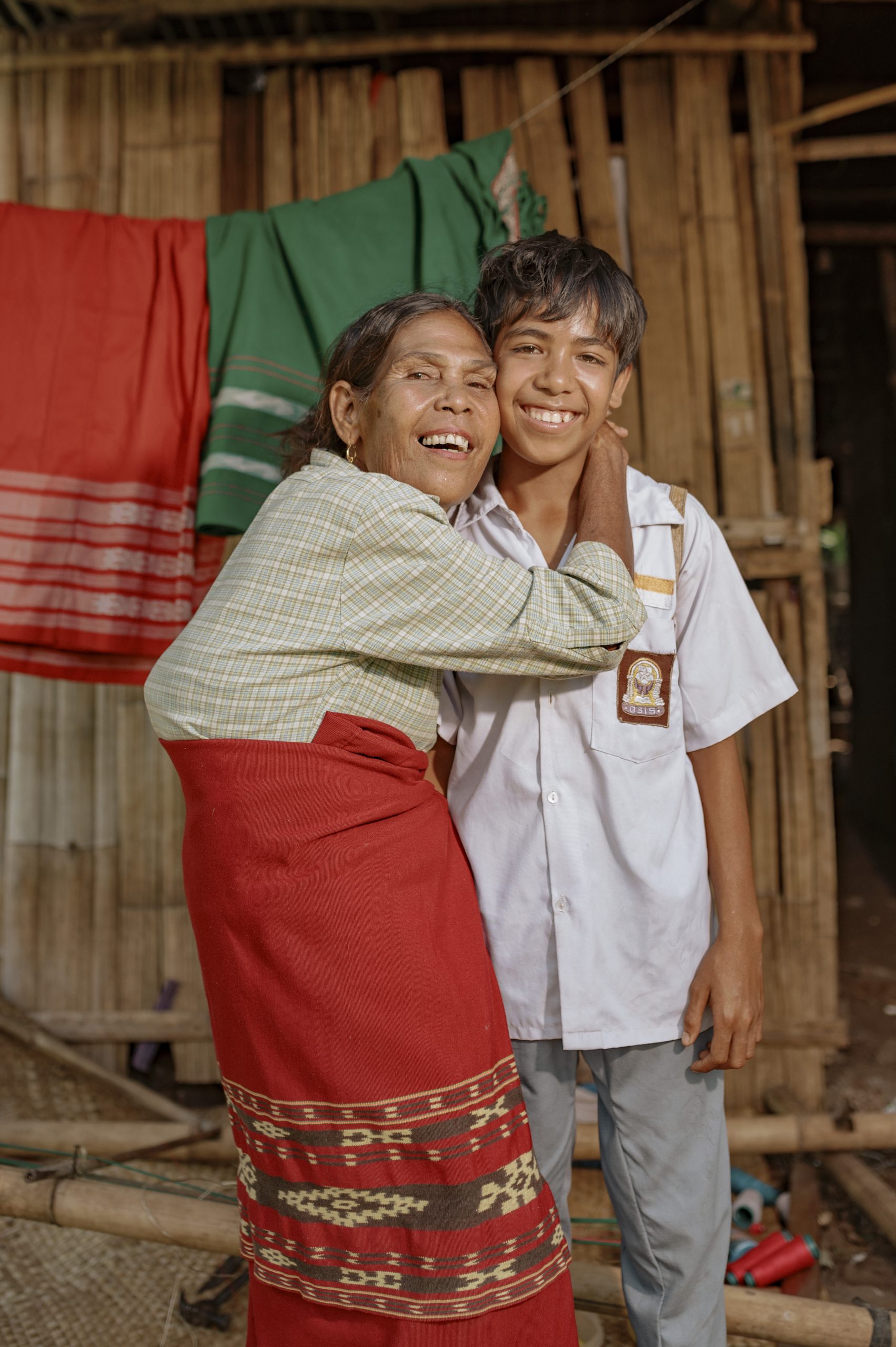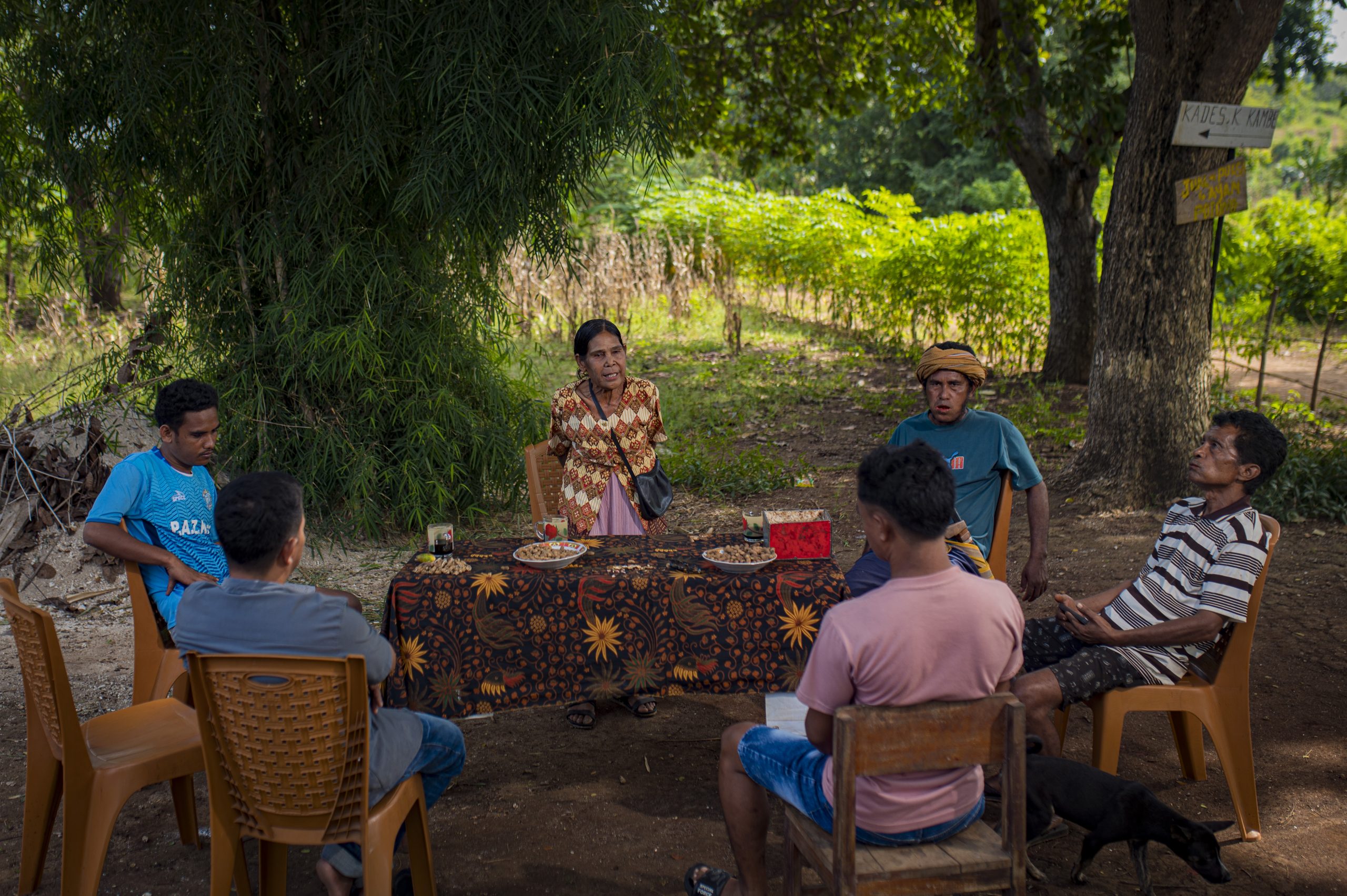
Bernardus Bili (57) is the Village Chief of Kalaki Kambe, Southwest Sumba. He has led the village since 2021. The population is 3000 people, mostly farmers who plant corn, betel nuts, cassava, and cashew nuts.
When Bernardus was elected, he approached everyone to discuss and find the right method to develop the village. He invited people to attend the village development plan meeting (Musrenbang) and other meetings held at the village office.
Not many people came. Bernardus felt puzzled. In 2023, some people came and invited him to collaborate. He was pleased to learn about and to be involved in the Inclusive Rural Community Livelihood Development Program in Eastern Indonesia (BangKIT) from the BaKTI Foundation.
Village administration is a government apparatus. It is a place that accommodates people’s aspirations and a place to create a communal life. The villagers were asked to talk about their hopes and desires for the village. Proposals were diverse. “The proposals then sorted into priorities, and we found them,” said Bernardus.
BangKIT field officers, for example, help villages introduce an environmentally friendly and effective agricultural system. One of them is the introduction of the tortilla chip group business. For many people outside Sumba, said Bernardus, the chip product is common. “But for us, it’s something new. We, in the village, did not know that cassava could be made into chips. We simply boiled or fried it. That’s it,” he said.
Another agricultural practice is planting corn in straight lines. Despite making the plants neat and pleasing to the eye, the straight line and space would also make it easier for the people to clean and harvest.
In many places in Sumba, along the people’s plantations, corn is planted irregularly. If the corn grows tall and someone enters the plantation, they have to go around to get out. “We simply plant until the land is full,” said Agustinus Lelu Umbu Sogara, another villager from Kalaki Kambe.
Agustinus said, gardens with good planting distance seem to produce good yields. “We’ve been saying it’s a habit practiced in the past. Apparently, there is a better way, and our ancestors did not know about it either.”
According to Bernardus, the system introduced by BangKIT to Kalaki Kambe Village is prominent, recognizing the village’s potential, then elaborating it into a method and vision.
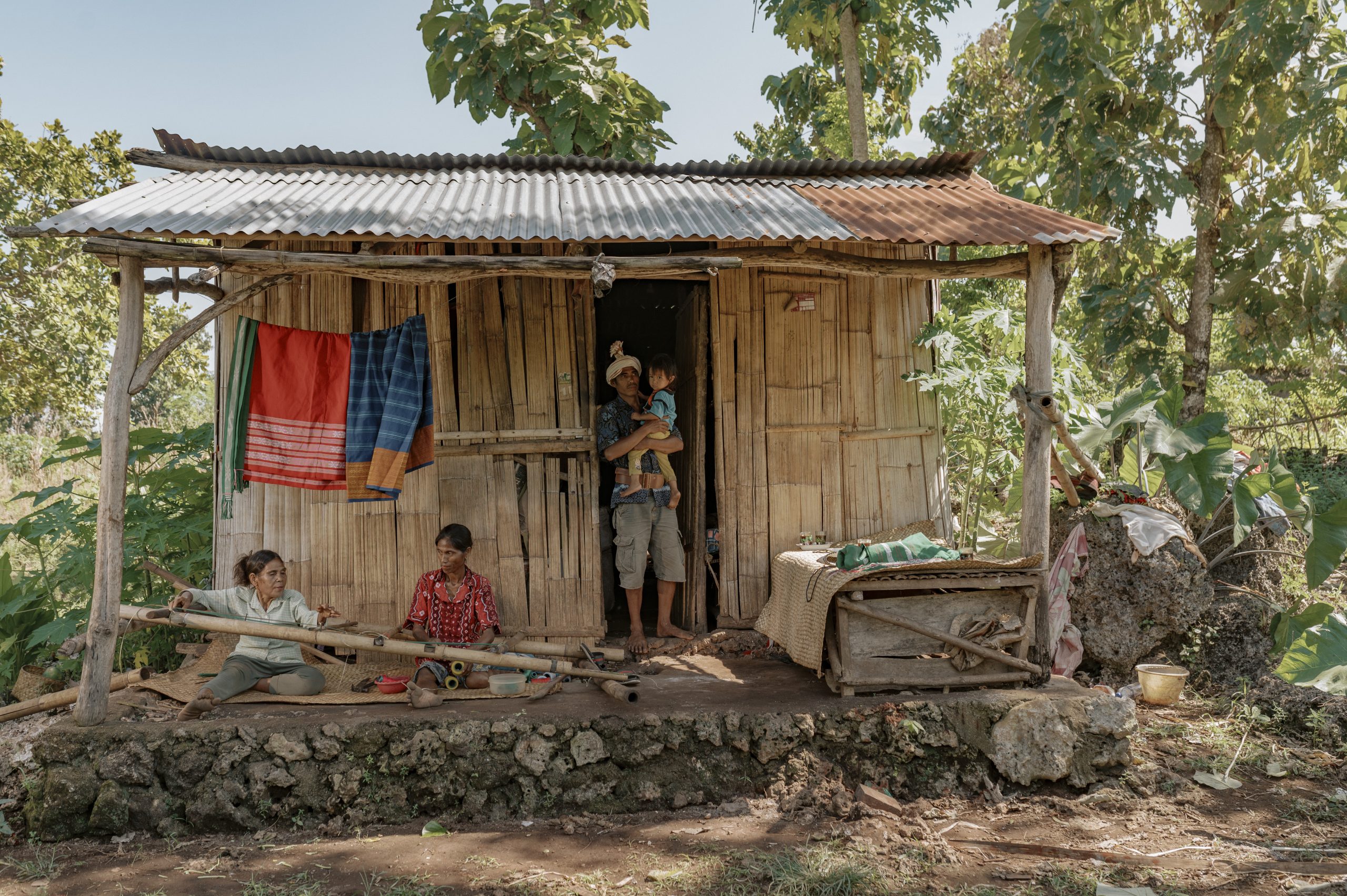
Hoping for An Inclusive Village
Maria Bulu (57) was resting under a cashew tree next to her house. The heat that afternoon was quite intense. She raised her hands, showing her bent and shuddering fingers.
Maria is a single mother with six children. Previously, Maria lived in another village with her husband and children. When her first child was about to continue his education at college, she migrated to Malaysia to work as a household assistant.
In Malaysia, she earned seven hundred to one thousand ringgits. After several years, Maria got sick and her employer took her to the hospital. In three months, she saw changes in her body. Her spine curved, and her body hunched.
She then returned to Sumba. Not long after, her husband died. Maria went back to her small village in Kalaki Kambe. She built a small house with bamboo walls on her piece of land in the village.
With pride, she lived in the house with her children without electricity. Maria was classified as poor and received BLT (Cash Assistance) for 300 thousand rupiahs per month, disbursed every three months.
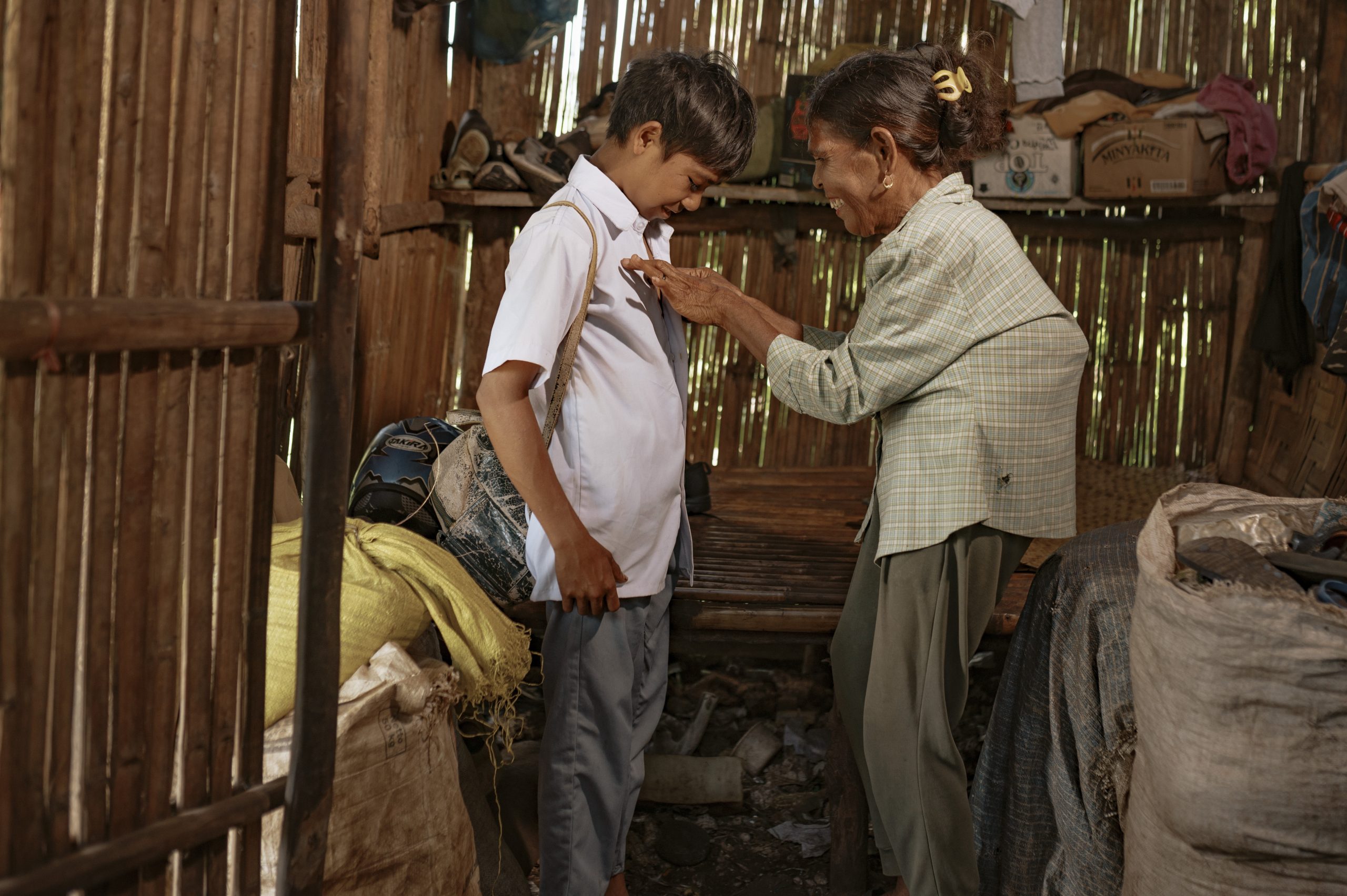
She planted corn and veggies in the garden behind her house for daily needs. Another activity is weaving. Weaving provides her with fast money. “There is a timeframe for the plants. It takes three or four months for the corn. What to eat while waiting for the harvest. My children are also at school,” she said.
BangKIT and the village administration provided yarn assistance for Maria. “An assistance like this makes me happy. I feel more responsible for weaving continuously,” said Maria.
Maria brings her woven products to the nearest market. The price ranges from 250 thousand rupiahs to 500 thousand rupiahs. She does not make complicated patterns. It takes time. “I’m making it simple and easy for a quick return,” she said.
“I can make it (pattern) complicated, if someone orders it.”
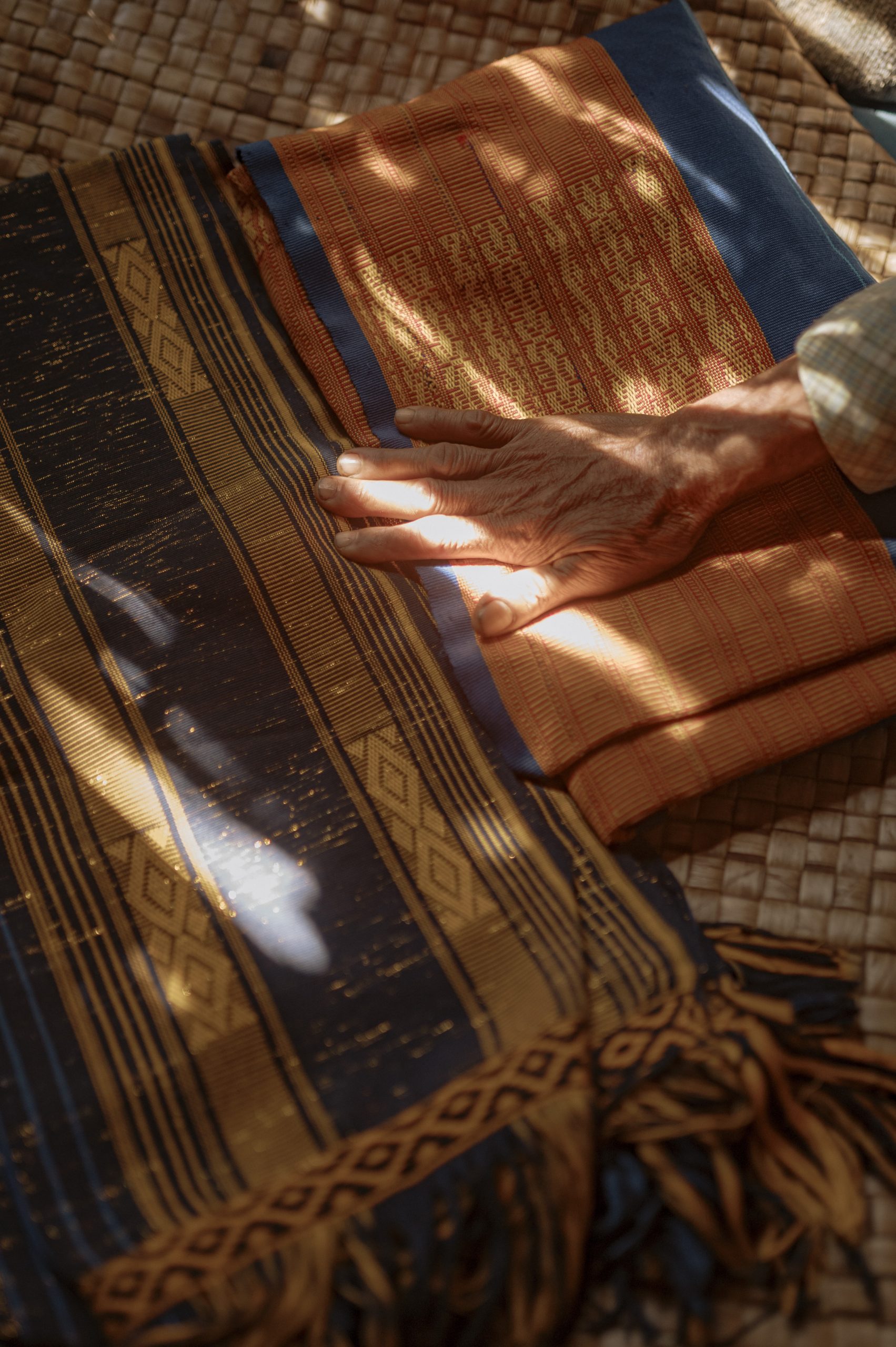
Maria admitted that she cannot fully rely on weaving. She cannot sit for too long and gets tired easily, and moving the loom requires physical strength.
Despite the stimulus, one thing that made Maria very happy was that the village administration invited her to participate in the village planning. She could provide input and be a minority representative in the village program. “My body is hunched like this, I thought people would avoid me. I never thought that I could ever be active again,” she said.
Participating in a village program is not new for Maria. She was once involved in a women association (PKK) movement when she lived in a faraway village before her husband passed away.
At the moment, there are four weaving groups in Kalaki Kambe Village. Maria usually visits the groups in her free time just to share stories and discuss. Maria has regained her confidence. Unlike when she first returned, she felt inferior and embarrassed to meet people. “Now it’s comfortable. It’s like my small village is back and the people are better,” she said.
“I am no longer afraid and don’t feel avoided by people.”
